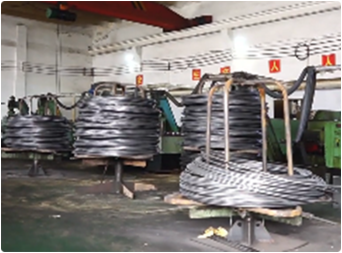Oct . 06, 2024 10:39 Back to list
bolt manufacturing process
The Bolt Manufacturing Process An Overview
Bolts are essential components in various applications, from construction to automotive engineering. Understanding the bolt manufacturing process is crucial for engineers and manufacturers alike, as it encompasses several stages that ensure the production of high-quality, durable fasteners. This article will provide an overview of the bolt manufacturing process, including the raw materials used, the steps involved, and the quality control measures implemented.
1. Raw Materials
The first step in the bolt manufacturing process is the selection of raw materials. Bolts are typically made from high-quality steel, which offers strength and durability. The most common grades of steel used in bolt production include carbon steel, alloy steel, and stainless steel. Each type of steel has its specific properties, making it suitable for different applications. For instance, stainless steel bolts are corrosion-resistant, making them ideal for use in harsh environments. The raw materials are usually procured in the form of wire rods, which are subsequently processed to create the desired bolt shapes.
2. Wire Drawing
Once the raw materials are received, the production process begins with wire drawing. This process involves reducing the diameter of the steel rod by pulling it through a series of dies. The wire drawing process not only alters the dimensions of the material but also enhances its mechanical properties. The drawn wire typically has a diameter that corresponds to the specifications for the bolts being produced. This stage is critical for ensuring that the raw material reaches the desired thickness and strength.
3. Cold Heading
The next step in the bolt manufacturing process is cold heading. This is a forging process where the drawn wire is shaped into a bolt head by applying high pressure. Cold heading does not require the steel to be heated, which helps retain the strength of the steel. During this stage, the wire is cut to the appropriate length, and then it is clamped into a machine that strikes it with a die to form the head of the bolt. This process is highly efficient and allows for the mass production of bolts.
4. Threading
bolt manufacturing process

After the head is formed, the next step is to create the threads on the bolt. Threading can be accomplished using several methods, including rolling, cutting, or grinding. In most cases, thread rolling is preferred as it strengthens the threads without removing any material. This technique involves passing the formed bolt between two dies that have the desired thread profile, which compresses the material into the required shape. This step is crucial as the threads provide the necessary engaging surface for nuts and other fastening devices.
5. Heat Treatment
To enhance the strength and hardness of the bolts, heat treatment is often employed. This process involves heating the bolts to high temperatures and then cooling them rapidly. The specific heat treatment process—such as quenching and tempering—depends on the type of steel used and the intended application of the bolts. By carefully controlling this process, manufacturers can optimize the mechanical properties of the finished bolts, ensuring they can withstand the stresses and strains they will encounter in their respective applications.
6. Surface Treatment and Coating
To protect bolts from corrosion and improve their appearance, surface treatment and coating are essential. Common finishing techniques include zinc plating, galvanizing, and coating with other protective materials. These treatments not only enhance the aesthetic appeal of the bolts but also increase their longevity, making them suitable for various environments.
7. Quality Control
Quality control is a critical aspect of the bolt manufacturing process. Manufacturers typically conduct several tests to ensure that the bolts meet required specifications. These tests may include tensile testing, hardness testing, and dimensional inspections to verify that each bolt adheres to industry standards. By implementing strict quality control measures, manufacturers can prevent defects and ensure the reliability of their products.
Conclusion
The bolt manufacturing process is a complex series of steps that transform raw materials into essential fasteners used in numerous applications. From wire drawing to heat treatment and surface finishing, each stage plays a vital role in producing high-quality bolts. By adhering to stringent manufacturing standards and quality control measures, manufacturers can deliver reliable products that meet the demanding needs of their customers. Understanding this process is essential for anyone involved in the design and manufacture of mechanical systems and structures.
-
sleeve-anchor-innovations-that-hebei-yuetong-fasteners-engineering-excellence
NewsAug.22,2025
-
screw-s-precision-engineering-for-global-industries
NewsAug.22,2025
-
hexagon-nut-that-high-quality-fasteners-from-hebei-yuetong
NewsAug.22,2025
-
clamp-that-high-quality-fastening-solutions-from-hebei-yuetong
NewsAug.22,2025
-
bolt-that-reliable-fasteners-from-hebei-yuetong
NewsAug.22,2025
-
anchor-bolt-that-premium-fasteners-for-secure-and-durable-installations
NewsAug.22,2025


